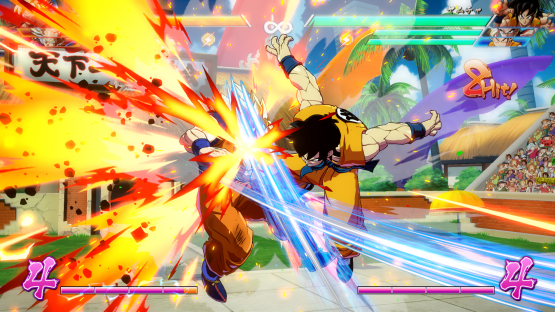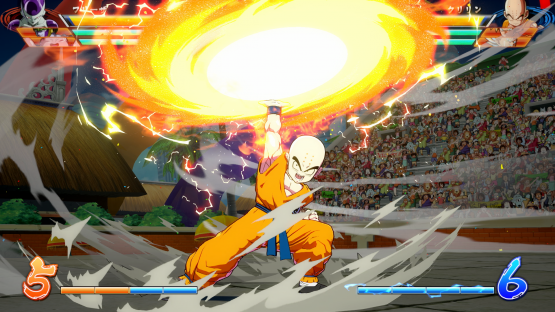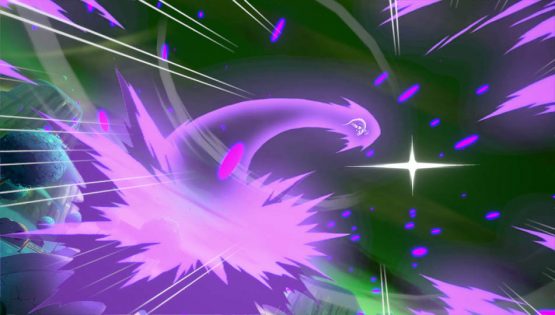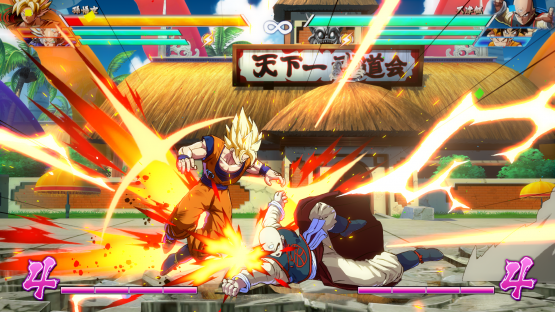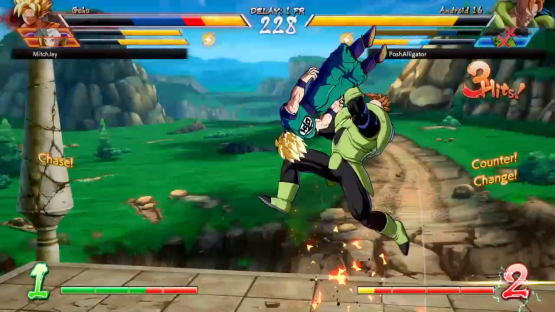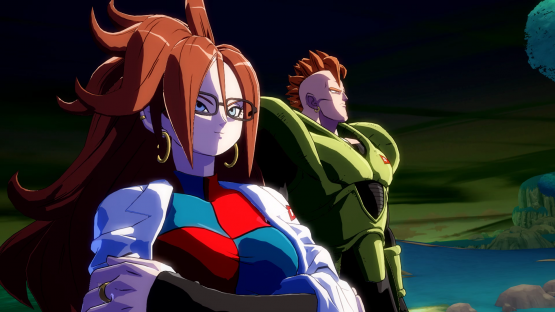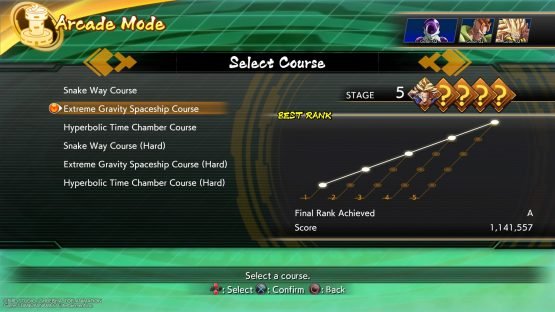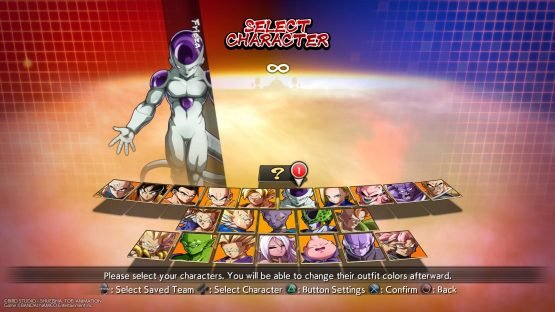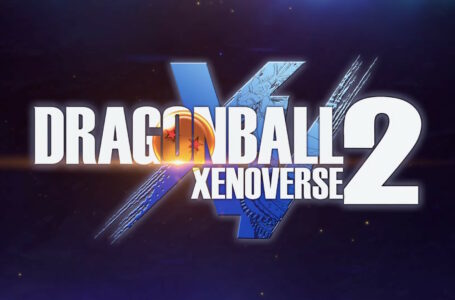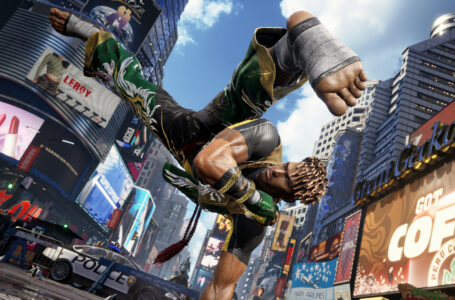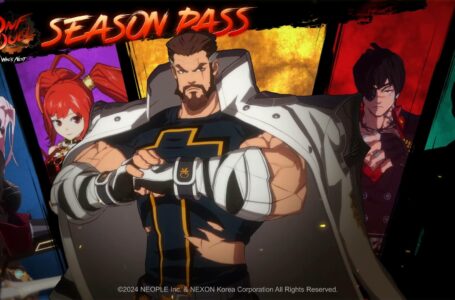Dragon Ball FighterZ Review – Ballz to the Wallz Fun (PS4)
For those who haven’t watched or read Dragon Ball Z, the anime and manga — the series involves a lot of fighting. Like, a lot of fighting. It’s basically all fighting. Naturally, the series has lent itself to many fighting games in its time, some great fun, and others less so.
Arc System Works’ Dragon Ball FighterZ is far from just a step forward for Dragon Ball fighting games, but an instant transmission to a whole new planet.
A stunning recreation of the anime & manga. Without a doubt, Dragon Ball FighterZ is the best looking Dragon Ball game ever made.
Arc System Works are already a dab hand at fighting games, having two big fighting game series of their own — BlazBlue and Guilty Gear — and also having made numerous fighting games for other people, as well as produced fighting games from other developers. At a glance, Dragon Ball FighterZ shares a lot of DNA with Guilty Gear Xrd, the latest Guilty Gear iteration. Both are 3D fighters that retain the look and feel of 2D. What results is a stunning recreation of the anime & manga. Without a doubt, Dragon Ball FighterZ is the best looking Dragon Ball game ever made.
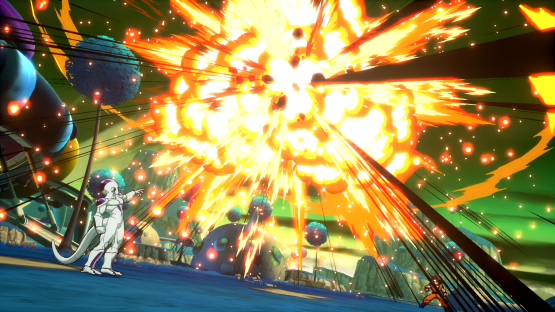
Arc System Works’ Dragon Ball FighterZ is far from just a step forward for Dragon Ball fighting games, but an instant transmission to a whole new planet.
The fighting fundamentals are also similar to Guilty Gear in that it’s a four-button fighter with a similar move layout. Along the top of your face buttons you’ve got light, medium, and heavy attacks, with the bottom face button being some sort of special attack for each character — usually energy blasts. We’ll call these L, M, H, and S. But, beyond that, Dragon Ball FighterZ has a whole lot of its own mechanics that come together to make it a really unique fighter.
One thing that sets Dragon Ball FighterZ apart is how standardised the basics of every character are. There’s not a lot of variation in how basic combos work, and each character has their own auto-combo tied to L, M, and H — and they all work basically the same way. L will end up in an air combo giving you some height, ending with a smash down; M will end in a super move; and H will be a heavy hitting combo into a low air combo.
It’s a great way of getting newcomers to think about how they use the tools they’re given, and a great way into thinking about competitive fighting games.
But, at any point in these combos you can switch it up with the other attacks, deviating from the norm. There are some exceptions, like anti-airs and some unique moves, but there’s not much besides these basic pathways to set you off, and the directions you hold while attacking doesn’t really matter either. But, having auto-combos baked into the core of how the fighting system works does give it a level playing field, and it’s possible to really change up these pathways when you get familiar with them. It’s a great way of getting newcomers to think about how they use the tools they’re given, and a great way into thinking about competitive fighting games.
No shoryuken motions, no full-circles. Quarter circles only.
Similar to the combos, the specials and super attacks are all pretty standardised too. Some characters have access to more supers than others, but they’re always going to just be a single quarter circle either backwards or forwards — and will have at least one Lv 1 super, and a Lv 3 super, which use that many energy bars to perform. No shoryuken motions, no full-circles. Quarter circles only.
Specials are always mapped to a quarter circle and a single face button, and supers are the same, but require two buttons (which can vary, though both combinations are mapped to R1 and R2). In most cases, performing a special with the H button gives you a super-powered EX-style version of the move that will use a bar of energy.
There’s not much sweeter than vanish striking Goku in the back after he tries to super kamehameha you.
Beyond these basic attacks are some complexities. A deflect parry allows you to push block basically any move in the game, though leaves you open for a pummelling if you mistime it, but gives you a lot of possibility to control how you clash with the opponent. The dragon rush is the universal grab move, with a wide range that move forwards, but a large amount of wind-up; and can also be used as a snapback to force your opponent to switch characters (more on character switching later).
You can also use a vanishing strike any time at the cost of 1 bar to instantly teleport behind the opponent and hit with an air kick. It’s resource intensive for what it is, but can allow you to escape from sticky situations, and can even punish raw supers if an opponent tries to get one off on you without making sure you’re stunned or locked into an animation. There’s not much sweeter than vanish striking Goku in the back after he tries to super kamehameha you, that’s for sure.
The super dash is another pretty unique move you’ll be seeing a lot of in Dragon Ball FighterZ. It’s a homing dash attack that instantly goes into an air combo, and automatically goes through projectiles that aren’t “beam” attacks. It can be tempting to just dash at opponents over and over to constantly be clashing, and with the AI you can do that most of the time, but the super dash can also be batted away pretty easily by simply blocking or even deflecting. But, it still opens up the play field extensively, and makes it even easier to incorporate air combos into attacks.
It’s truly easy to learn but hard to master, a concept no other competitive fighting games seem to be able to get as right as Dragon Ball FighterZ does.
On top of these there’s also a ki charge to gather energy quickly, and a sparking blast move that basically just powers you up once per battle, based on team members you have left. Every element in this fighting canvas is simple to grasp, but leaves a lot of room to how you mix it all together. It’s truly easy to learn but hard to master, a concept no other competitive fighting games seem to be able to get as right as Dragon Ball FighterZ does.
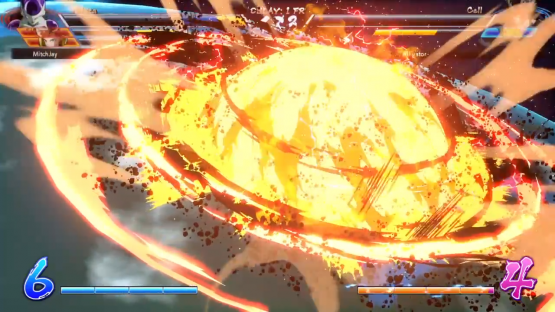
You begin to blot all of these primary colours into a truly spectacular and vibrant image: a fighting style that works just for you.
As well as these basic simple components, everything gets a little bit more complicated when you take into account it’s a 3v3 fighter. Assists can hop in whenever, including to supplement Lv 1 supers with their own, or to mix it up mid-combo. While all of the basics are the same, there are enough different character types to build a team that can specialise around different scenarios, and you begin to blot all of these primary colours into a truly spectacular and vibrant image: a fighting style that works just for you.
Android 16 is a slow grappler, so maybe you tag him in mid-air combo to finish it off with a heavy air grab that smashes the opponent into the ground. Or maybe you call in Gotenks as an assist to use his Galatic Donut energy grab to leave you open to attack with a follow-up. The simplicity of the game’s components allows just about anyone to see how the building blocks of fighting game strategy come together, while at the same time leaving it open to very high level play. The only real downside is that because of this, high level matches are going to take a very long time to play out almost every time.
It’s tempting to think that the game’s simple nature will lead to some repetitive play, but fighting other humans that’s not really the case*. Because the make-up of the game is so easy to see and learn, you’ll be able to more easily understand what’s happening, and rework the patterns you’ve come up with to re-fit situations of the fly. But, when it comes to flying solo, you’d mostly be right, and things can begin to feel a little samey.
The single player options aren’t extensive — an arcade mode, a practice mode, and a story mode (which also incorporates tutorials). You can learn how to play via the story mode, but there’s also some nice tutorial functions in Practice mode, building on the teaching tools that were so excellent in Guilty Gear Xrd Revelator.
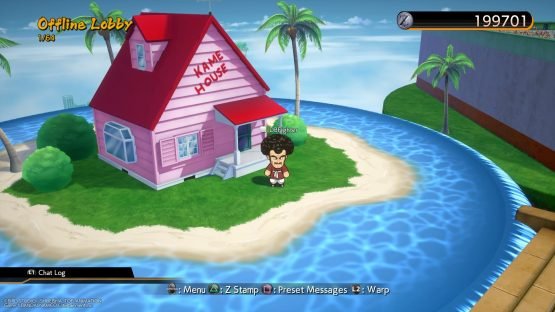
The villain of the story is Android 21, a brand new character whose design was overseen by Dragon Ball creator Akira Toriyama himself. Those worried this is simply making Toriyama’s own Xenoverse original character canon needn’t be. She’s a great addition to the Dragon Ball cast, and is tremendously fun to play as too (you unlock her as a fighter once you beat the story).
The story itself is completely original, taking place sometime during Dragon Ball Super as Beerus and Whis show up. It’s a nice enough story, and has some pretty cool moments that feel fresh for the series, and also a lot of nostalgic winks back to the series.
You can’t help but feel like newcomers to Dragon Ball are going to end up feeling pretty lost, though, and while the new story is neat, it mostly just involves fighting “clones” (villainous recreations of the fighting roster) over and over again as you make your way across very basic, abstract maps/boards of cobwebby paths towards a boss as you level up and gain new characters to use in your line-up or passive abilities. The levelling doesn’t really make much of a difference, as it mainly just affects enemy health and damage output rather than giving them more complex AI, so you either do really good against the simple AI, or end up getting hit with a tonne of damage by being complacent.
We love a good board-esque map any day, but the very basic nature of these repetitive maps ground us down a bit. It’s a little reminiscent of Dragon Ball Z Budokai 2‘s maps, but with less interesting visual design, which is a shame. All in all the story offers 3 arcs with different perspectives, and slightly different endings to the same tale(they’re all alternate versions of the same story), which totals to about 8 hours of play. But, it’s all so samey and not very challenging, that it’ll definitely feel like a grind if you try to do it all too fast.
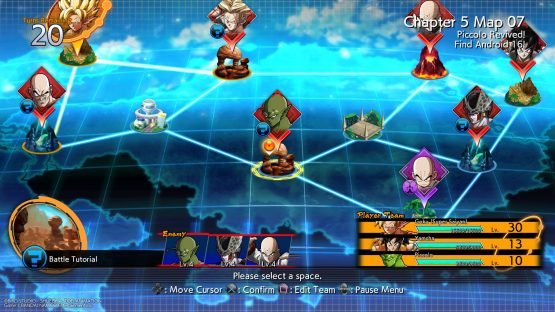
The arcade mode is a little more interesting, offering three different challenges with 3, 5, and 7 battles each — and each has a hard mode unlocked by completing the normal mode. These arcade pathways are tiered, with your route splitting depending on if you play well enough in each match. Getting a good enough score in some of these even gets you extra characters.
The different arcade modes can be challenging, but like in the story mode the increased difficulty of the opponents mainly takes the form of increased health and damage output, without the AI getting too complicated. Still, getting A or S ranks in all routes is sure to put many to the test.
While the solo features present are nice enough, they’ll get old quite fast if you just want to play on your own.
The online servers aren’t open yet*, and we’ll update when they are. We had a blast in the beta, and in local multiplayer. Ultimately, Dragon Ball FighterZ is a game meant to be played with other people. While the solo features present are nice enough, they’ll get old quite fast if you just want to play on your own.
This isn’t exactly a deep dive into Dragon Ball lore, so those looking for a retelling of the anime will be disappointed, and the roster — while really strong — obviously doesn’t contain tens of minor d-tier characters like you’d get in some of the less competitively viable Dragon Ball games prior to this one.
It’s the best Dragon Ball fighting game, one of the best looking fighting games in general, and a rare welcome entry point for newcomers to understand what competitive fighting games are all about.
Dragon Ball FighterZ is a phenomenal fighting game. So much love and care has gone into making every pixel shine. It’s a fantastic and fresh feeling fighting game that could be a stepping stone for many people to check out more competitive fighting games, and it’s also a huge love letter to the source material. The single player options may get old fast, especially as you’ll find yourself doing to same combos over and over, but against other human opponents you’ll constantly be reworking your technique. But the question is, with those building blocks, how deep can it really go?
It’s the best Dragon Ball fighting game, one of the best looking fighting games in general, and a rare welcome entry point for newcomers to understand what competitive fighting games are all about.
*We’ve not tested online play yet, as the servers aren’t up yet, but will udpate the review when it’s live. We have, however, played the beta versions extensively online, and put a lot of time into local battles too.



